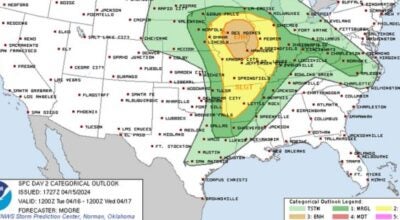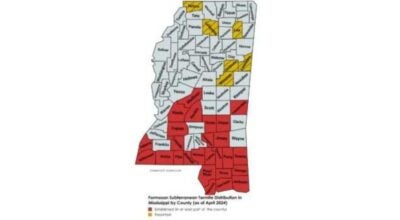‘God is against us’ … U.S. remembers heat wave, drought of 1988; could it happen again?
Published 9:07 am Friday, August 9, 2019
By John Roach, AccuWeather staff writer
The heat wave that smothered much of the United States in 1988 was simultaneously in-your-face extreme almost daily and yet beyond nightmarish imagination.
It included the largest fire in Yellowstone National Park’s recorded history, as the park experienced almost no rainfall from June through August.
The heat wave and drought that year blistered a large swath of the country and pushed temperatures consistently into the 90s and 100s from the Midwest to the East Coast.
And on June 21, 1988, nearly every state in the continental U.S. reported temperatures above 90 degrees, except those in northern New England, UPI reported at the time.
The extent of the extreme conditions were laid bare in the dramatic open to the June 24 edition of ABC’s “World New Tonight.” Just three days into official summer, Peter Jennings, the venerable newsman and the network’s top anchor at the time, opened that evening’s broadcast by recounting the deadly impacts and describing the frustrations some Americans were suffering as the hot, dry weather tightened its grip on an expanding portion of the country.
Some Midwesterners, he told viewers, were “so distraught, they’ve told their congressman, ‘God is against us,'” as he tossed to ABC News correspondent Chris Bury for a deeper look at how the heat wave was wreaking havoc.
The deaths in the thousands resulting from the heat wave and drought were hard to count then and hard to fathom now more than 30 years later.
“If I had in my hand right now the number of people that have died this summer, it would be front-page news all over the country,” W. Moulton Avery, executive director of the Center for Environmental Physiology in Washington, D.C., told the New York Times in 1988. “But I don’t have that number.”
At the time, death totals were estimated by comparing deaths in heat wave years to normal years and calculating the excess fatalities, the Times noted. As a result, it is estimated that between 5,000 and 10,000 people died as a result of extreme heat that begin in 1988 and lasted into 1990 in some places.
The losses and costs to agriculture and related industries totaled an estimated $44.2 billion, making it one of the most severe weather and climate disasters since 1980, according to the National Oceanic and Atmospheric Administration.
The heat wave and drought of 1988 was a mere 31 years ago, though the details surrounding it seem more like a surreal echo of the landscape-altering Dust Bowl days of the 1930s. But it is not merely a memory; the 1988 heat wave is also a reminder.
Could it happen again?
“Sure, no doubt about it,” said AccuWeather Expert Senior Meteorologist Dave Dombek. “Weather patterns are cyclical.”






